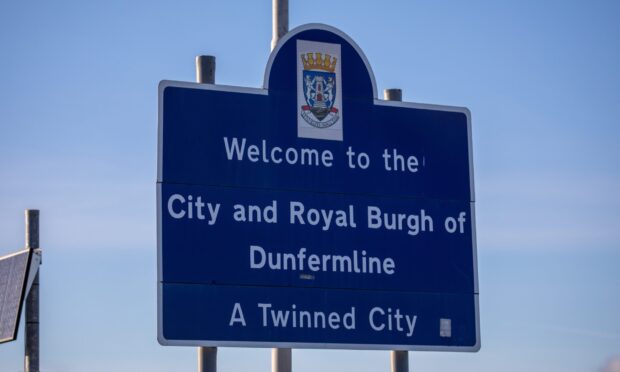Plans to stop burning gas high in the sky above Mossmorran are little more than a public relations exercise, according to a community councillor living nearby.
Shell has promised to introduce technology to remove the need for “elevated flaring” at its Mossmorran plant.
That means burning off gas between 20 to 150 meters above ground – a sight that is often visible for miles around.
Managers plan to replace the flares with units working closer to the ground by 2025.
That is not enough for Tom Kinnaird from Benarty Community Council.
” [Ground flares] will do nothing to alleviate the harmful chemicals released into the atmosphere.
“It’s a step in the right direction for them on a PR basis – they won’t have that scary flare high in the sky, it will be at ground level.
“But the light pollution, and the worry that comes from that is still there.
“The harm will still be done. It is business as usual at Mossmorran.”
‘Frightening’ light pollution may remain
Tom lives about five miles from the chemical plant.
He claimed the move will only “slightly alleviate” the visual impact of flaring.
Elevated flares are when the flare tip is between 20 to 150 meters above ground.
The elevated flaring from the chemical plant creates a frightening glow in the night sky that Tom has previously dubbed the “Mordor effect”.
An enclosed ground flare is a third of the height and has a hidden flame.
In Iraq, people’s homes are not allowed within a six-mile radius of flaring sites by law.
Tom said: “We can only dream of having similar environmental rules.”
“They say there’s no danger,” Tom continued, “but at the end of the day, you’re burning hydrocarbons directly into the atmosphere in a populated area.
“The plant has long past its shelf life.
“Times have moved on and the emissions from that site shouldn’t be allowed in the modern age.”
Mossmorran plant is ‘Scotland’s third biggest emitter of greenhouse gases’
Green MSP for Mid-Scotland & Fife, Mark Ruskell, also questions the continuing presence of the plant.
He said: “The plant is Scotland’s third biggest emitter of greenhouse gases.
“Reducing the impact of flaring on the local community is just one part of the issue that needs addressing to understand what kind of future this plant faces.”
At the moment, Shell’s Fife Natural Gas Liquids (NGL) plant shares two ground flares with its neighbour, Exxonmobil’s Fife Ethylene Plant (FEP).
The latest plan will provide the neighbouring Fife Ethylene Plant (FEP) with another flare, reducing the need for the NGL plant to use their elevated flares.
Plant managers also have other plans to modernise the design of their ground flares.
Craig Burnett is Shell’s Fife NGL plant manager.
He said: “The planned installation of the new ground flares at Fife NGL in 2025 will ensure that we are continuing to deploy best available technology at the plant.
“It will help to minimise the impact of our operations with respect to the local community,” he added.












Conversation